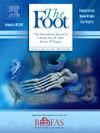Optimising rigid ankle foot orthoses design: A quantitative evaluation of trimlines on stiffness
Q2 Health Professions
引用次数: 0
Abstract
Ankle-foot orthoses (AFOs) are of important in the management of gait deformities in most neurological conditions through stabilising and supporting the ankle and foot. Despite its importance, there is a lack of knowledge about how some design parameters, particularly trimline geometry, affect AFO stiffness. This study employs a parametric finite element (FE) model to quantify the impact of trimline design on rigidity to improve standardisation of AFO prescription manufacture, and quality control. A parametric model was developed to systematically modify trimline placement and analyse its effect on AFO stiffness. A dorsiflexion moment of 30 Nm was employed to simulate loading conditions, with experimentally determined material properties of polypropylene. The parametric model was developed and validated against experimental results. Trimline positions were manipulated systematically by 1 mm in the proximal and 10 mm in the distal direction of ankle to investigate their impact on stiffness. Thickness, loading, and constraints were controlled for in the analysis. The results of this study verify that the model accurately predicts ankle dorsiflexion, and there are small discrepancies between calculation and experiment. Having more than five transverse plates proximal to the footplate and distal to the ankle does not significantly impact stiffness. Furthermore, trimline position has significant effect in AFO rigidity, that even small changes affect stiffness. Change in trimline posterior to the ankle produced a linear decrease in stiffness, while trimline adjustments distal to the ankle had a nonlinear effect. These findings emphasise the importance of precise prescription and quality control of trimlines to optimise the AFO function.
优化刚性踝关节足矫形器设计:对刚度的镶边线的定量评价
踝足矫形器(AFOs)通过稳定和支持脚踝和足,在大多数神经系统疾病的步态畸形管理中具有重要意义。尽管它很重要,但人们对一些设计参数,特别是边缘几何形状,如何影响AFO刚度缺乏了解。本研究采用参数化有限元(FE)模型,量化三棱线设计对刚性的影响,以提高AFO处方生产的标准化和质量控制。建立了一个参数化模型,系统地修改了切线位置,并分析了其对AFO刚度的影响。采用30 Nm的背弯力矩模拟加载条件,并通过实验确定聚丙烯的材料性能。建立了参数化模型,并与实验结果进行了对比验证。系统地在踝关节近端和远端分别操作1 mm和10 mm的边缘线位置,以研究它们对刚度的影响。在分析中控制了厚度、载荷和约束条件。本研究结果验证了该模型能准确预测踝关节背屈,且计算与实验误差较小。在足底近端和踝关节远端有超过5个横向钢板不会显著影响僵硬度。此外,侧边线位置对AFO刚度有显著影响,即使很小的变化也会影响刚度。踝关节后侧线的改变会产生线性的刚度降低,而踝关节远端侧线的调整则会产生非线性的影响。这些发现强调了精确处方和质量控制的重要性,以优化AFO功能。
本文章由计算机程序翻译,如有差异,请以英文原文为准。
求助全文
约1分钟内获得全文
求助全文
来源期刊

Foot
Health Professions-Podiatry
CiteScore
2.00
自引率
0.00%
发文量
37
期刊介绍:
The Foot is an international peer-reviewed journal covering all aspects of scientific approaches and medical and surgical treatment of the foot. The Foot aims to provide a multidisciplinary platform for all specialties involved in treating disorders of the foot. At present it is the only journal which provides this inter-disciplinary opportunity. Primary research papers cover a wide range of disorders of the foot and their treatment, including diabetes, vascular disease, neurological, dermatological and infectious conditions, sports injuries, biomechanics, bioengineering, orthoses and prostheses.
 求助内容:
求助内容: 应助结果提醒方式:
应助结果提醒方式:


